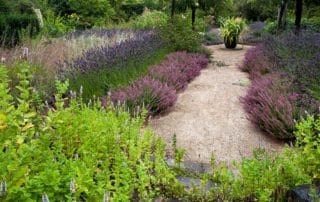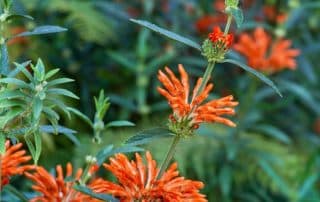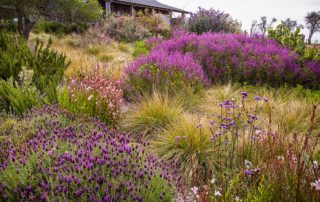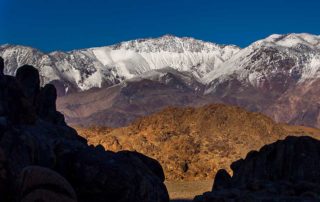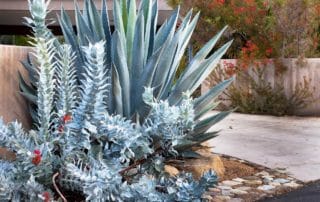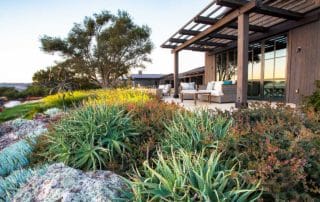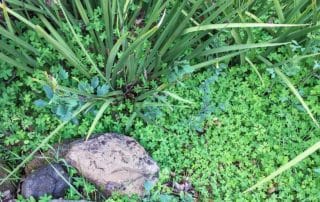Some of our favorite plants and gardens for summer-dry climates.
Teucriums Are Deer-Proof Too
Those of us with unfenced gardens adjacent to wildlands usually learn the hard way which plants are ignored by browsing deer and which, without special protections, are not. It may seem that our choices in plants are rather limited, but lush and lovely deer-resistant gardens can be made. Madeira germander (Teucrium betonicum, in flower) with sages and santolina Perhaps the widest range of deer-resistant options for summer-dry climates lies within the Lamiaceae, or mint family, which includes among its more than two hundred genera many plants that are widely used in gardens where summers are dry -- salvia,


